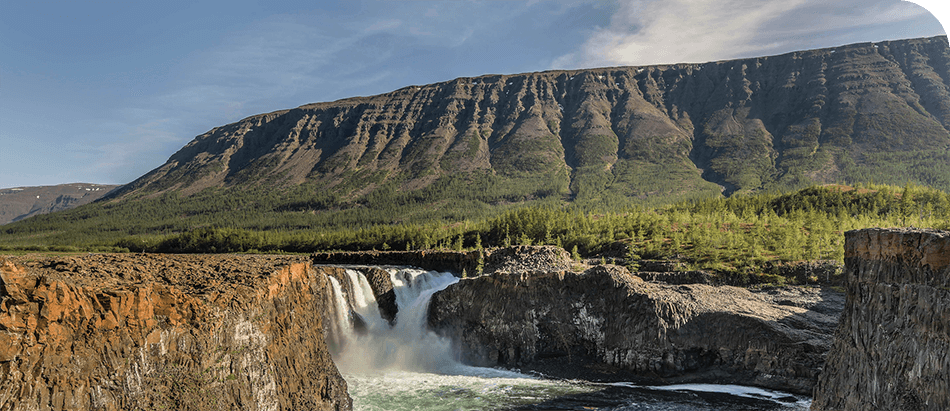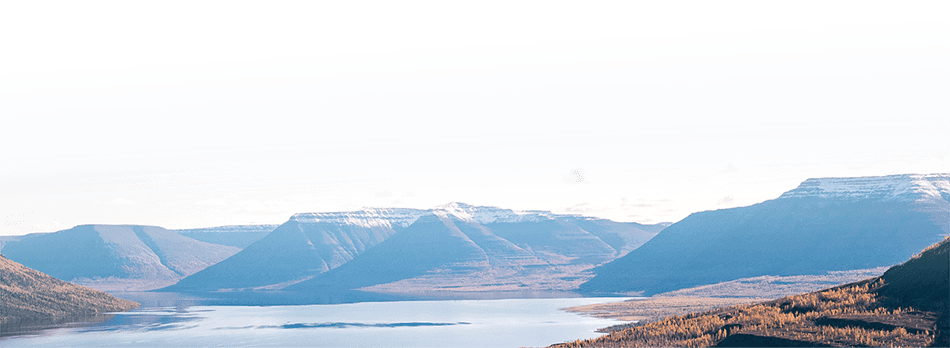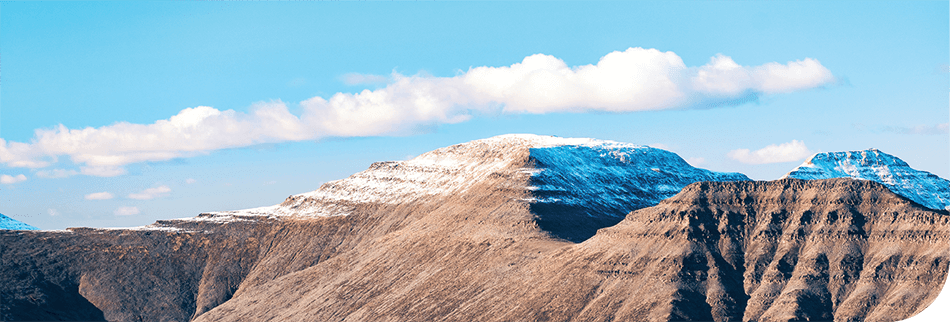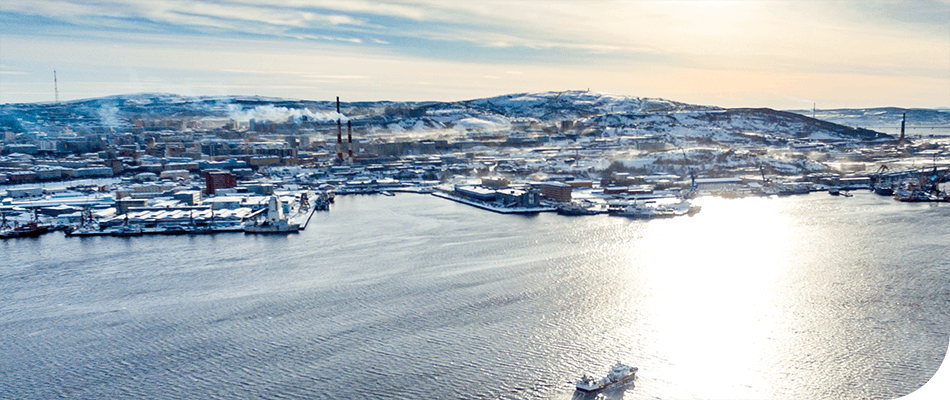Approaches to Climate-Related Risks Assessment. Assessment Results
As part of implementing the TCFD Roadmap and meeting the targets set in the corporate Environmental and Climate Change Strategy, Nornickel is improving its procedures for climate-related risk management.
As the first step in building these procedures, we selected public climate scenarios for the identification and assessment of physical risks. Then, Nornickel used the selected scenarios to develop its own global economy and climate change scenarios to identify and assess transition risks and opportunities.
Procedure for developing climate change scenarios
At the next stage, the Company established approaches to assessing the impact of physical risks, as well as transition risks and opportunities on the Company's operations and financial performance before identifying the main areas of adaptation to said risks and ways of mitigating them.
The project to develop a physical risk management methodology for the Company's facilities is divided into four key phases:
Phase 1. Climate modelling
The initial phase involved retrospective analysis of climate change since the 1960s supported by experts from the Institute of Atmospheric Physics of the Russian Academy of Sciences (IAP RAS) to determine the climate trends already occurring in the Company's regions of operation. The analysis revealed a trend for changes in a number of climate factors In the context of climate modelling, the expression "climate factor" is used throughout the text of the Report, while in the context of risk management, "climate risk factor" is used. . In Norilsk, for example, the temperature has been rising by 0.6 °C every decade, suggesting that the Arctic is warming faster than the global average.
Retrospective data on climate factors was obtained using measurements from the following weather stations.
Changes in key climate factors at Nornickel's main production assets in 1966–2020
Retrospective analysis was followed by scenario modelling of possible changes in climate risk factors until 2050. To this end, the Company selected three global climate scenarios developed by the IPCC – SSP1–2.6, SSP2–4.5 and SSP5–8.5, as well as CMIP 6 Sixth generation models of the Coupled Model Intercomparison Project. . In 2022, the Risk Management Committee of the Management Board approved this selection and the Sustainable Development and Climate Change Committee of the Board of Directors recommended it for further physical risk assessment The following probability of risk occurrence was determined for the selected scenarios: SSP1–2.6 — 25%, SSP2–4.5 — 70%, SSP5–8.5 — 5%. .
Source: IPCC Sixth Assessment Report: Climate Change 2022
SSP1-2.6 scenario: greenhouse gas emissions are expected to decline and reach zero by 2055, with an average annual temperature increase of 1.8 °C by 2100. Society makes the transition to more sustainable practices, with the focus shifting from economic growth to general well-being. Investments in education and health will be growing, and inequality will be declining.
SSP2-4.5 scenario: the current rate of increase in greenhouse gas emissions will be maintained, with carbon neutrality achieved by 2100. Socio-economic factors are changing in line with historical trends. Progress towards sustainable development is slow, with an even growth of the pace of development and incomes. According to the scenario, the average temperature will increase by 2.7 °C by the end of the century.
SSP5-8.5 scenario: the current level of GHG emissions will double by 2050. The world economy will demonstrate a rapid growth and development through the extensive use of fossil fuels and increased energy consumption. By 2100, the average temperature will increase by 4.4 °C.

For risk assessment purposes, global climate scenarios were localised by IAP RAS for all regions where the Company operates, including Finland. A number of climate factors were modelled until 2050.
They are taken into account in the risk assessment as risk factors for the Company's technical and production risks.
Modelling of changes in climate factors up to 2050 performed by IAP RAS for the territories where the Company's assets are located, in scenario SSP2-4.5 Other climate factors (forest fires, abnormal wind and abnormal cold, etc.) were also modelled, but their change in the models up to 2050 is insignificant (no or negative change trend) or they are irrelevant.
Scenario SSP2–4.5 is viewed by the Company as the most probable (baseline scenario).
Please note that according to the modelling results, the bulk of changes in climate factors will occur after 2040.
To achieve the objectives of the first phase of physical risk assessment, a list of climate factors that are available for prediction was modelled using weather data and climate models. Going forward, it is advisable to expand the list of modelled climatic factors relevant to the areas where the Company operates.
Alongside that, to improve the assessment it is equally important to take into account the effect of climate-related factors such as river basin water availability, floods, ice conditions on the Northern Sea Route and others. Modelling such factors is a complex task that requires further methodology development and data from other reliable sources. Developing a list of climate-related factors that affect the Company's assets is one of the priorities of improving the assessment of climate-related risks and opportunities.
Phases 2 and 3: Identification and assessment of physical risks
The Company completed the first phase of assessing the impact of climate risk factors Physical risk assessment considers climate impact at the level of risk factors vs the Company’s risks. on its Russian assets: Norilsk, Energy, Kola and Trans-Baikal Divisions.
In preparation for the assessment, various sources of information were analysed in addition to the modelling of climate factors:
- data sheet for monitoring technical, production and environmental risks;
- permafrost maps and data on the type of foundations of buildings and structures on permafrost soil;
- data from the system deployed in the Norilsk Industrial District to monitor buildings and structures on permafrost soil;
- data on registered defects and accidents caused by climate risk factors and the costs of their elimination;
- data on unfavourable weather conditions and emergencies;
- expert assessments of asset exposure to climate risk factors.
The assessment identified key risks posed by climate change and measures the Company is already taking to mitigate their impact.
The analysis found that most of the industrial buildings and structures in the Norilsk Industrial District are built on stable (rock) foundations; therefore, linear infrastructure such as pipelines and power lines is more susceptible to the impact of permafrost soil degradation.
According to the assessment, the impact of climate risk factors in the short- and medium-term until 2028 is mitigated by operations, activities and investment projects aimed at improving the reliability of industrial assets and infrastructure. In order to mitigate the risks associated with the condition of permafrost soil in the Norilsk Industrial District, the Company monitors the technical condition of assets on an ongoing basis through expert examinations, surveys, and monitoring of the condition of permafrost soils and basement foundations.
To estimate the long-term impact of climate risk factors on the Company's operations until 2050, we will have to improve climate modelling, collect additional statistics of the Company to assess the impact of climate risk factors on its operations, and analyse data on geological and permafrost conditions of infrastructure locations. In addition, climate change projections will need to be periodically updated and the assessment methodology refined to reflect new data.
Phase 3. Development of approaches to mitigation and adaptation
The Company analysed international best practices in adapting to and mitigating climate-related risks at the city and company levels. In developing its approaches to adaptation, Nornickel follows best practices in:
- developing employee competencies in climate change monitoring;
- building procedures for climate-related risk assessment;
- monitoring and analysing climate data and impact of climate risk factors on the Company's operations;
- assessing physical climate-related risks;
- fostering cooperation with R&D centres on climate-related issues.
To assess the risks and opportunities associated with the global energy transition, Nornickel has developed three proprietary long-term global economy and climate change scenarios until 2050.
“Using the long-term climate scenarios and global economy scenarios is key to adapting to the climate-related physical risks, as well as risks associated with the global energy transition. At the same time, the latter presents certain opportunities as we expect the global demand for Nornickel's green metals to grow, and our nickel boasts one of the lowest carbon footprints in the industry.”
Vice President for Investor Relations and Sustainable Development at Nornickel

To create global economy and climate change scenarios, the Company and the Institute of National Economic Forecasting of the Russian Academy of Sciences reviewed about 190 available public scenarios from leading developers (International Energy Agency, World Energy Council, International Renewable Energy Agency, OPEC, Bloomberg, NGFS, Shell, BP, DNV, etc.). This resulted in three global economy and climate change scenarios corresponding to the climate change trajectories that are presented in public scenarios SSP1-2.6, SSP2-4.5, SSP5-8.5.
The first scenario, Rapid Transition, aims at achieving the Paris Agreement goals, the second, Sustainable Palladium, focuses on maintaining current social, economic and technological trends, and the third, Global Growth, involves abandoning efforts to curb climate change, with further economic growth to be supported by hydrocarbons, mainly in developing countries.
Key characteristics of the scenarios developed to assess transition risks and opportunities until 2050
Sustainable Palladium became the baseline scenario, which provides for traditional industries to remain centre stage along with the green economy. In particular, ICE vehicles will retain a large market share, contributing to a steady demand for palladium in the long run. The Company will apply the other two scenarios in stress-testing of climate-related risks. In addition, a scenario parameter monitoring tool was developed to record actual deviations from the baseline scenario.
Changes in global indicators in the scenarios developed to assess transition risks and opportunities in 2019–2050

Results of transition risks and opportunities assessment
Potential risks and opportunities were identified based on global economy and climate change scenarios, as well as analyses of legislative carbon initiatives, market trends and stakeholder expectations.
Transition risks
- Compliance with carbon regulations in the Company’s export markets
- Compliance with national carbon regulations
- Failure to achieve the decarbonisation targets:
- due to a mismatch between the real and expected impact of low-carbon technologies or the inability to scale low-carbon technologies;
- due to the lack of opportunity to engage with and purchase services from advanced international low-carbon technology providers
- Inability to raise additional funds on favourable terms
- Limited sales opportunities due to insufficient carbon intensity reduction efforts compared to peers
- Restrained demand for primary platinum group metals due to declining sales of internal combustion engine vehicles
- Restrained demand for primary nickel due to a decline in overall vehicle production as a result of increase in ride-sharing and autonomous vehicles and the development and mass production of new nickel-free batteries
- Restrained demand for primary metals due to increased recycling
- Negative stakeholder perception towards the Company’s climate action
- Higher frequency of protests by non-profit organisations and local communities, including indigenous northern minorities
Transition opportunities
- Use of ESG financing tools
- Sale of carbon credits resulting from climate projects
- Use of low-carbon technologies due to their development and lower cost in the long term
- Higher demand for primary nickel and copper due to the transport system electrification, growing hybrid vehicle market, and the development of renewables
- Growing demand for primary platinum group metals due to the use of platinum and palladium in the hydrogen economy and palladium in vehicles hybridisation
- Benefiting from the low carbon footprint of products
- Higher stakeholder loyalty thanks to the Company's climate action

To mitigate the risks associated with carbon regulations, the Company frequently monitors legislative initiatives in both Russia and export markets.
In 2022, as part of the "Sakhalin experiment", the Russian Government set a fee for exceeding the GHG emission quota at RUB 1,000 per tonne of CO2. This charge only applies to entities operating in the Sakhalin Region and does not affect Nornickel.
As to overseas markets, the Carbon Border Adjustment Mechanism (CBAM) introduced in the European Union from 2023, does not pose any risk to the Company in the short term as base and platinum group metals are not currently included in the list of products subject to the tariff. The Company will keep monitoring the development of carbon regulation both in Russia and abroad and forecast the amount of potential associated costs.
In the long term, Nornickel relies on its competitive advantage – one of the lowest product carbon footprints in the industry.
The Company is also exploring opportunities related to the trading of carbon credits that may be generated as a result of climate projects both in the Russian and foreign carbon markets.
To reduce reputational risks associated with the global low-carbon transition and capitalise on opportunities, the Company:
- continuously monitors the requirements of Russian and international standards, industry best practices, recommendations, including TCFD and GRI, and improves the scope and quality of information disclosure;
- maintains an active dialogue with all stakeholders, including customers, suppliers and local communities;
- builds a responsible supply chain: in 2023, Nornickel plans to start collecting information on GHG emissions from its suppliers;
- conducts audits and self-assessments for compliance with the requirements of international and Russian industry standards and associations;
- participates in Russian and international ESG ratings, including those assessing climate action;
- promotes the climate agenda both domestically and internationally, shares its experience in implementing climate change projects and facilitates cross-sector and industry dialogue.
Nornickel seeks to reduce its GHG emissions and maintain one of the lowest product carbon footprints in the industry. We monitor the market for commercially available low-carbon technologies and explore opportunities to collaborate with advanced companies that develop such technologies.
In the context of restricted access to certain foreign technologies for improving energy efficiency and reducing GHG emissions, the Company is taking steps to redesign its key investment projects in line with actually available technologies.
Sustainability assessment of Nornickel's product portfolio under three global economy and climate change scenarios
One of the key drivers of Nornickel's long-term strategy is the growing demand for the Company's metals to develop a low-carbon economy. The very fact of supplying green metals to the market means that the Company is actively contributing to the global transition to cleaner modes of transport and renewable energy.
To assess market-related transition risks and opportunities, Nornickel modelled changes in the demand for key metals under three own global economy and climate change scenarios.
The demand forecasting was based on the analysis of development trends in the industries that are major consumers of Nornickel's metals. Nickel is the core metal for stainless steels used in multiple sectors – from mechanical engineering and construction to renewable energy. In addition, Nickel is essential in producing new and future generation batteries, which in turn play a vital role in developing electric transport.
Despite strong decarbonisation and a shift to electric vehicles in the Rapid Transition scenario, higher nickel demand is expected in the Sustainable Palladium scenario due to a faster GDP growth and greater numbers of electric vehicles, and in the Global Growth scenario on the back of a significant increase in the metal demand for the stainless steel and alloy industries.
Copper becomes critical for transitioning to a low-carbon future, as it is used in high-tech equipment, including RES hardware. Over 70% of copper produced globally is used to manufacture various cables and wires. Total copper consumption is expected to at least double by 2050.
Similar to the nickel demand outlook, higher GDP growth and greater electrification of vehicles will ensure higher copper consumption in the long term in the Sustainable Palladium scenario than in the Rapid Transition scenario. The highest demand for copper is expected in the Global Growth scenario due to the highest GDP growth rate and the resulting strong demand for copper in transport, air-conditioning and refrigeration, construction, heavy engineering, and consumer goods.
Catalytic converters mainly for petrol engines (including hybrids, which have a lower carbon footprint than traditional ICE vehicles) are the biggest palladium consumers (over 80%) in the middle term. This metal is used in catalytic converters to detoxify exhaust fumes. In most countries, such converters are legally required to be installed on all cars. Other applications for palladium include electronics, dentistry and jewellery, chemicals and pharmaceuticals. Palladium may also be used to enable long-distance transportation of hydrogen and its purification.
The main driver of the decline in palladium demand in the greenest Rapid Transition scenario, which assumes universal reduction in car ownership and use, is phasing-out of ICE vehicles in the world's key economies.
In the Sustainable Palladium scenario, which the Company has adopted as the most likely one, moderate electrification of vehicles alleviates the effect of falling demand for palladium, while the still high share of ICE vehicles will support such demand.
The highest demand is expected in the Global Growth scenario due to the strong GDP growth and demand for palladium, primarily in the transport sector, where the manufacture of ICE vehicles is expected to grow (through hybrid vehicles), as well as in jewellery.
At present, the automotive industry is the key consumer of platinum (40%) which goes to auto catalytic converters for ICE vehicles, including hybrids. Another important application area is jewellery which consumes around 25% of platinum. Platinum is also used in glass manufacturing to produce equipment (bushings) for making glass fibre and optical glass, and in electronics. Platinum is an essential component of catalysts for electrolysers used in the production of green hydrogen, as well as fuel cells used in both transport and stationary hydrogen energy generation solutions.
All three scenarios presume that the platinum demand will grow. In the Global Growth and Sustainable Palladium scenarios, the platinum demand is mainly driven by the continued high percentage of ICE vehicles.
At the same time, the Rapid Transition scenario is expected to have the highest demand by 2050: despite the decline in sales of ICE vehicles, the development of hydrogen energy and the fuel cell market will generate the highest platinum demand compared to the other two scenarios.
To understand the potential impact of transition risks on the Company better, the Company plans to update the global economy and climate change scenarios and risk assessment at least once every three years.
Based on the global economy and climate change scenarios, Nornickel conducted a scenario analysis of the consolidated financial and economic model until 2050. The analysis shows revenue growth in all scenarios by 2050 against the average value for 2017–2021. The key revenue growth drivers in the Global Growth scenario are the highest GDP and population growth rate, which will fuel the strongest demand for palladium, nickel, and copper in 2050 vs the other two scenarios. Although the Rapid Transition scenario is based on the most aggressive decarbonisation rates, which is impossible without green metals – nickel and copper, – the scenario projects the global economy to slow down, with the lowest GDP and population growth rates. On top of that, the total car fleet, along with the fleet of passenger EVs, hydrogen cars, and plug-in hybrids in the Rapid Transition scenario will be lower than that in the Sustainable Palladium scenario as a result of the general trend towards reduction in car ownership and use and ride-sharing development.
To meet the growing demand for materials in the the rapidly developing battery sector, the Company expands its portfolio of cobalt and nickel products, including by amplifying the production of sulphates and other nickel and cobalt compounds. Nornickel is also developing technologies for the manufacture of lithium compounds, precursors and cathodes for the battery sector.
To mitigate the risk of restrained demand for platinum group metals due to declining sales of ICE vehicles in the Rapid Transition scenario, the Company is exploring the outlook of producing palladium catalysts for the growing hydrogen energy market. Today the hydrogen energy market uses platinum- and iridium-based catalysts. Nornickel is considering catalyst efficiency improvements achieved through partial replacement of these metals with palladium, which, thanks to its extremely high chemical resistance, may be more effective in catalysts than other platinum group metals.
Nornickel joined forces with the scientific community to create the first prototype of a palladium-based catalyst – nanosized material for membrane electrode assemblies used in the electrolysis of hydrogen.
‘The hydrogen energy market is still in the making, but it is becoming increasingly evident that sooner or later hydrogen will find its niche in the technology sector by offering a viable alternative to traditional energy sources. We have every chance of emerging as one of key players in this industry, which is desperately looking for innovative products such as the one we are currently working on.’
Vice President for Innovations at Nornickel

Nornickel is exploring the prospects of using palladium in the production of the anode and cathode of a hydrogen-air fuel cell and a proton exchange membrane electrolyser. The Company’s Kola Division serves as a production site to manufacture limited batches of chemical compounds with platinum group metals. The latter can be used as the source material (precursor) to produce palladium-based catalysts.
The Company sees the development potential not only for catalysts, but also for other hydrogen energy segments such as membrane technologies for making, storing and transporting high-purity hydrogen.
In addition, Nornickel and the mining division of the State Atomic Energy Corporation Rosatom are set to develop Russia's most promising lithium deposit located in the Murmansk Region. The project of the Kolmozerskoye Deposit development envisages a 45 ktpa output of lithium carbonate and hydroxide.
The partners plan to set up a large-scale integrated production site spanning everything from mining and processing to high-tech production, helping to create over 1,000 new high-skilled jobs and substitute the imports of lithium feedstock and battery components.
“The timing of the Kolmozerskoye project is just perfect amid the soaring demand for lithium in electric transport and energy storage. Given the plans announced by other lithium producing nations, we must act swiftly. The partnership with Rosatom provides the project with the maximum range of competencies and enables its joint integration into all the stages and processes of the battery industry.”
Senior Vice President – Operational Director at Nornickel
